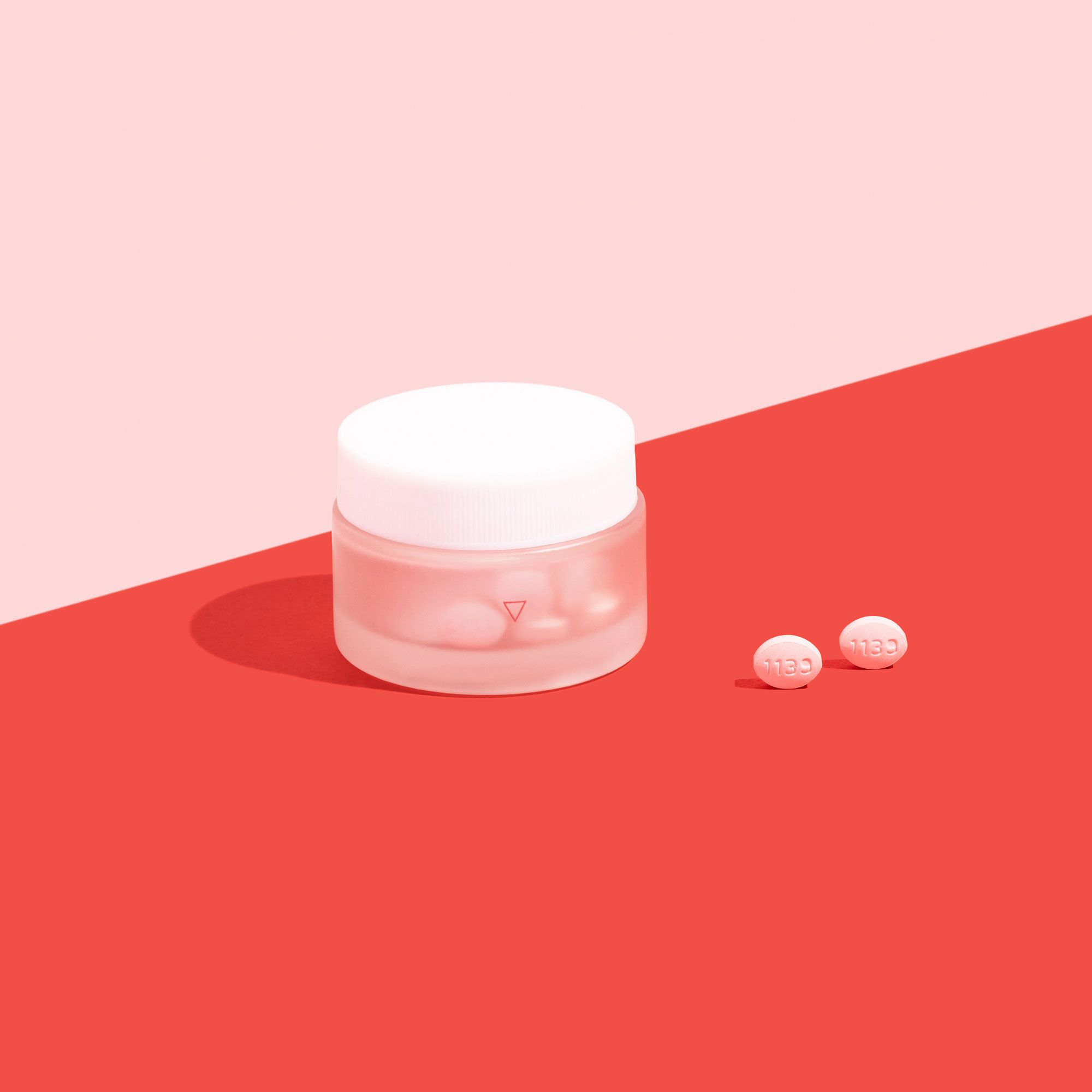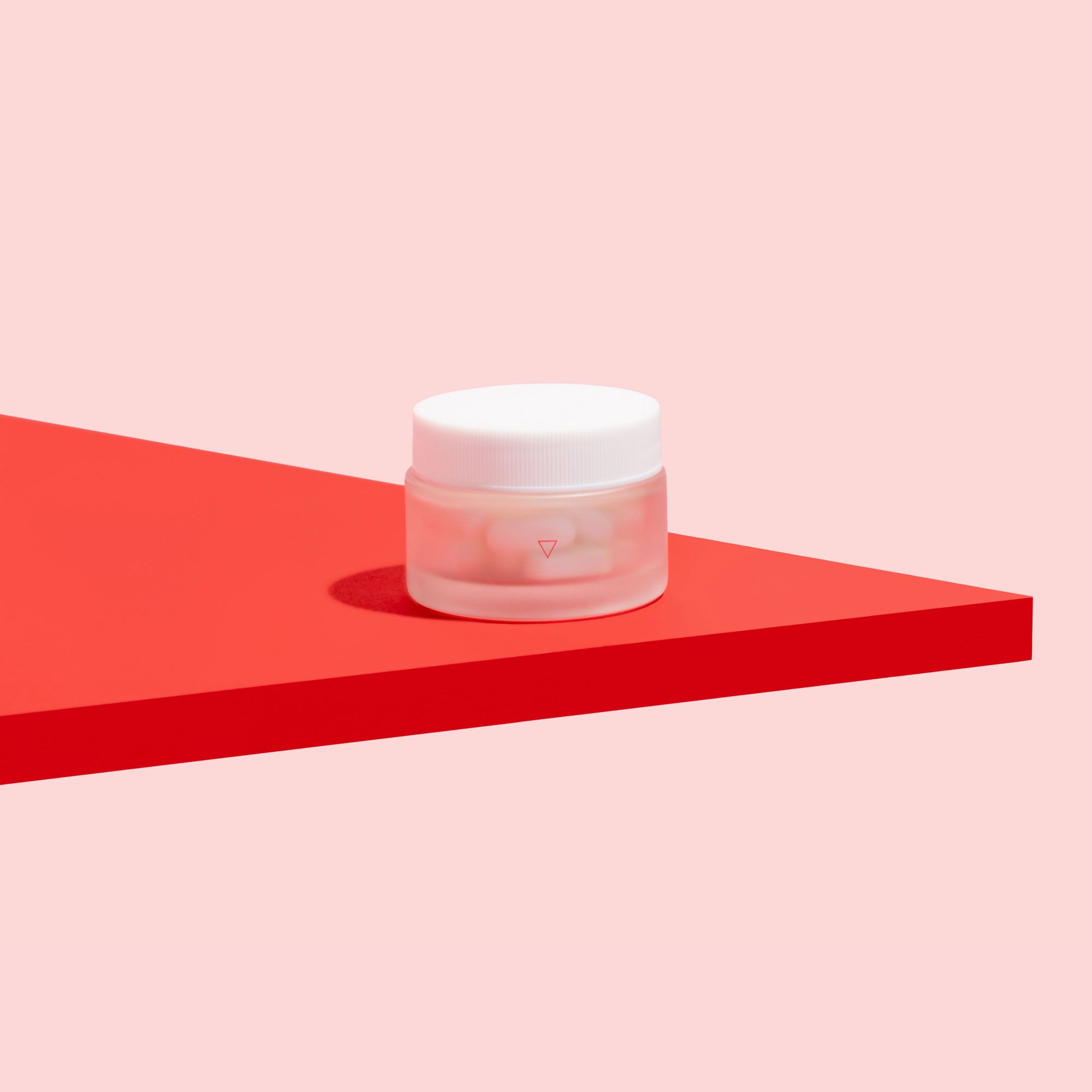
Everything You Need
to Know About Fluconazole
Published on October 5, 2021
Updated on March 28, 2025
Written by Kathleen Morrison
Medically Reviewed by Andrea Sleeth WHNP-BC, MSCP
Anyone who’s felt that familiar yeast infection itch knows that when it strikes, you’re looking for relief—fast. Over-the-counter creams are some of the first treatments people turn to, but they can be messy and often require multiple applications to work.
Doctors tend to prefer a prescription yeast medication called fluconazole (Diflucan). These yeast pills are just that—a fluconazole 150 mg tablet that you take orally.
It’s simple and easy to take and is one of the most effective and reliable yeast infection prescription treatments. If you’re looking for an easy yeast infection solution and are considering fluconazole, here’s what you need to know.
Wisp treatment options are available only after consultation with a licensed medical professional. You should consult with your healthcare provider before starting a new supplement or treatment regimen. Individual results may vary.
How does Fluconazole Work?
Fluconazole is a prescription-strength antifungal medicine used to treat infections caused by, well, fungus.
And yeast infections (vaginal candidiasis) are fungal infections that happen when something disrupts your vagina’s natural pH balance and natural balance of bacteria. This disruption can lead to an overgrowth of a yeast called Candida, an infection-causing fungus that often exists in your vagina without causing any problems.
However, when populations of Candida increase, it leads to inflammation, unusual discharge (people often describe it as having a “cottage cheese” look and texture), and that dreaded itch.
Fluconazole helps your body fight back against Candida fungal infections by limiting its ability to multiply and killing off existing yeast cells. Often, one fluconazole 150 mg tablet is enough to treat a yeast infection completely, but if not, a second tablet should get the job done.
Should I take Fluconazole for a Yeast Infection?
If you are someone who experiences recurring yeast infections or are sure you have a yeast infection, taking fluconazole is a great option! It’s a very effective medication and can work to interrupt a cycle of frequent infections. Plus, it’s super affordable and easy to get a prescription for fluconazole online.
Keep in mind that yeast infections do have symptoms that overlap with other common vaginal infections, so if you aren’t quite sure what you’re dealing with, you can always take Wisp’s Symptoms Quiz or message a doctor to ask questions.
Typically, vaginal yeast infection symptoms consist of:
- Itching
- White and chunky discharge
- Odorless discharge, or a very mild yeast infection smell
- Burning when urine touches raw, irritated skin
A yeast infection can also be confused with bacterial vaginosis, but there are key differences when it comes to BV symptoms:
- Intense “fishy” vaginal odor
- Thin grey or greenish discharge
- Itching
- Burning during urination
If you’re experiencing unusual odor and grey or green discharge, you’re likely dealing with BV. But if you just aren’t sure, it’s always best to consult with a doctor who can provide the proper diagnosis and treatment!
Does Fluconazole Treat BV?
Fluconazole is a go-to for yeast infections, but when it comes to bacterial infections like BV, it’s not quite the right fit. BV happens when there’s an imbalance in the vaginal microbiome, often leading to a fishy odor, unusual discharge, and discomfort.
Since it’s caused by bacteria—not yeast—it needs a different approach. Prescription antibiotics like metronidazole or clindamycin are typically the best way to clear up BV.
If you’re unsure whether you’re dealing with a yeast infection or BV, you’re not alone. They can have overlapping vaginal symptoms, and it’s easy to mix them up. Checking in with a healthcare provider can help determine the right treatment and get things back on track.
Can I take Fluconazole and Boric Acid Together?
Yes! Fluconazole and boric acid can work well together in certain situations. Fluconazole is used to treat yeast infections from the inside out, while boric acid suppositories can help support a balanced vaginal environment.
Some people use boric acid even after taking prescription antifungal medication to help support their vaginal health and keep things balanced down there—infection or not.
That said, boric acid is powerful—so it’s important to follow proper dosing instructions and check in with a healthcare provider if you’re not sure it’s right for you. If symptoms aren’t clearing up or infections keep coming back, there may be an underlying cause worth exploring.
When Should I take a Second Fluconazole?
Once you’re sure you have a yeast infection and decide to get prescription fluconazole treatment, your healthcare provider may prescribe two to three 150 mg tablets.
The first dose should do the trick, but a stubborn yeast infection may require an extra antifungal kick to get the job done. In this case, a second (and even a third) dose can be taken 72 hours later. However, it’s important to get the go-ahead and exact dosage details from your healthcare provider.
In other cases, you might be prescribed a smaller dose of 50 mg to take daily—at the same time—for up to two weeks.
Should your symptoms fail to improve after the allotted time, let your provider know, and they may prescribe you a different medication or a more intensive treatment regimen with fluconazole.
How Long Does it Take for Fluconazole to Work?
Fluconazole is a fast-acting prescription antifungal, but symptom relief doesn’t always happen overnight.
Most people start feeling better within 24 to 48 hours after taking a dose, but symptoms can take up to a few days to fully clear. If itching, irritation, or discharge persists beyond that window, the infection may need a little extra attention—sometimes, a second dose is necessary.
Everyone’s body responds differently, and factors like the severity of the infection or overall health can play a role in how long fluconazole takes to offer relief. Staying hydrated, wearing breathable fabrics, and giving the body time to heal can help support the process. If symptoms linger or come back frequently, checking in with a healthcare provider is a good next step.
Why Does my Yeast Infection Keep Coming Back?
Many people experience recurrent or chronic yeast infection symptoms that leave them wondering, “Why does my yeast infection keep coming back?” There are a few different possible causes of these repeat symptoms:
- Your initial infection wasn't treated completely
- You're creating humid or moist conditions for Candida to thrive
- You have a drug-resistant strain of yeast
- Your vaginal bacteria is out of whack
- You have a weakened immune system
At the end of the day, your body chemistry might just make you a bit more prone to yeast infections. Staying clean and dry in cotton undies, sticking with loose-fitting clothes, and making sure you consult with a doctor when you have yeast infection symptoms are all great ways to stay on top of your vaginal health and break a cycle of recurrent infections.
Can you get Yeast Infections from Having Sex?
If you do have frequent yeast infections, especially if they occur after sex, you may be wondering if you can get a yeast infection from sex. Yes, it's entirely possible for sex to trigger a yeast infection, but that doesn't mean it's an STI.
Sex can be a contributing factor in disrupting your vaginal ecosystem, which in turn can lead to a yeast infection. In rare cases, a person with a penis can get a yeast infection if they have vaginal sex with someone who has a yeast infection. It's also possible to pass yeast infections between female partners.
That's why it's usually best to put yourself out of commission until your infection clears up.
Kicking Yeast Infections to the Curb
Yeast infections are frustrating, but they don’t have to take over your life. Fluconazole is a trusted, effective way to get relief and get back to feeling like yourself. Whether it’s your first infection or a recurring issue, understanding how this medication works—and when to reach out for extra support—can make all the difference.
If you’re dealing with an infection and need fast, hassle-free prescription treatment, Wisp has got you covered. Skip the waiting room and get fluconazole delivered discreetly to your door or sent to your local pharmacy. Get the help you need today.
Frequently asked questions (FAQ):
How do you know if fluconazole is working?
The first sign that fluconazole is doing its job is a noticeable drop in itching, burning, or discharge. Most people feel relief within 24 to 48 hours, though it can take a few days for symptoms to fully clear. If there’s no improvement after a few days or symptoms worsen, it may be time to check in with a healthcare provider.
Is one pill of fluconazole enough?
For many, a single dose of fluconazole is all it takes to clear a mild yeast infection. But for more stubborn infections, a second dose—usually taken three days after the first—may be recommended. If yeast infections keep coming back, a longer treatment plan might be needed, so it’s always good to discuss recurring symptoms with a provider.
Does fluconazole give instant relief?
Not exactly. While fluconazole gets to work quickly, it takes time for symptoms to fade. Some people feel improvement within hours, but most notice relief within a day or two. For faster comfort, pairing fluconazole with an external antifungal cream or soothing home remedies (like a cool compress) can help ease itching while the medication does its thing.
Does yeast come out after taking fluconazole?
Fluconazole works by stopping the yeast overgrowth, so there’s no dramatic “flushing out” process. As the medication clears the infection, discharge or irritation should gradually fade. If there’s an increase in discharge or other unusual symptoms after taking fluconazole, it could be a sign of another issue, and a healthcare provider can help figure out what’s going on.

Fluconazole (Diflucan) 150mg
The most common prescription antifungal used to treat vaginal yeast infections.
Starting at $15.00
Get Started
Metronidazole (Flagyl) For BV
The most affordable topical prescription antibiotic for treating bacterial vaginosis.
Starting at $15.00
Get Started

